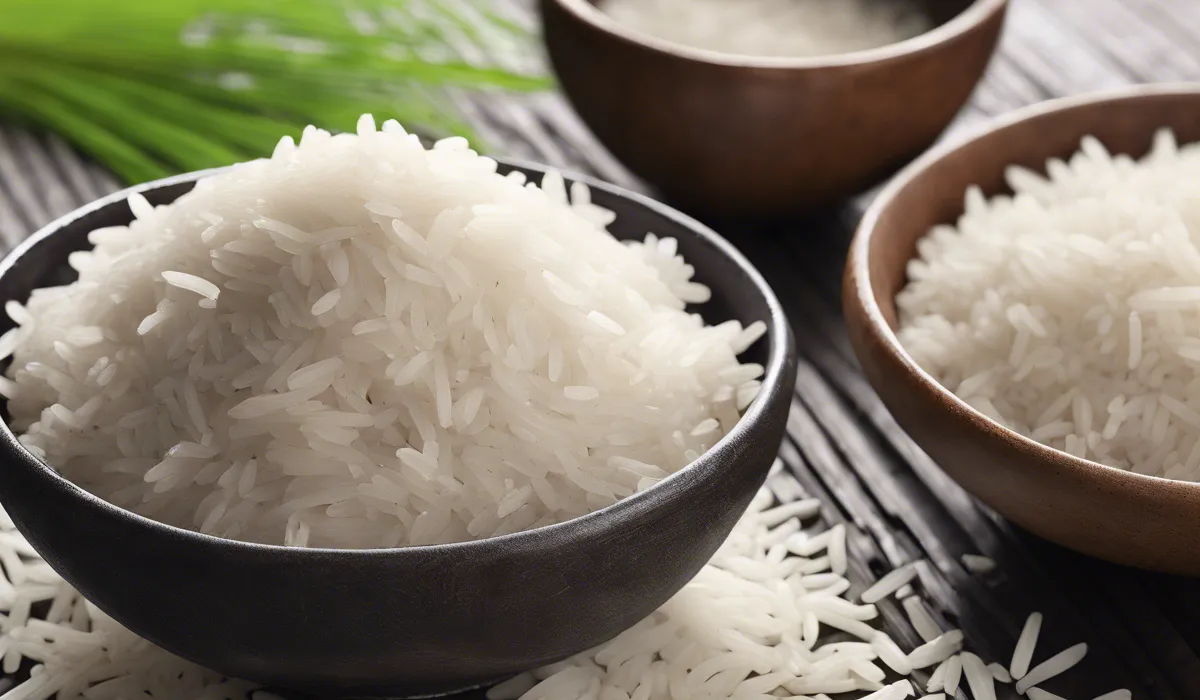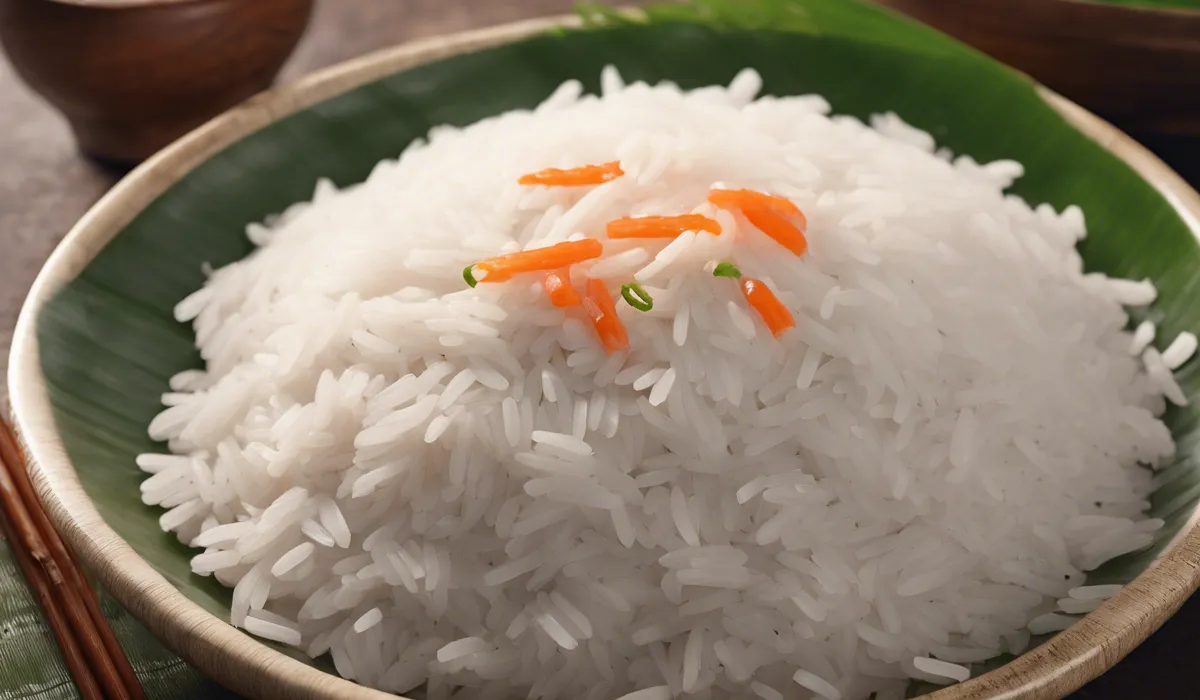Yes, cooked rice can grow mold if stored improperly. Left at room temperature for too long or kept in a moist environment, cooked rice becomes a breeding ground for mold and bacteria. To prevent mold, refrigerate cooked rice within two hours of cooking and consume within a few days.
Understanding Mold and Its Growth on Cooked Rice

What Is Mold?
Mold is a type of fungus that can grow almost anywhere there’s enough moisture. This tiny organism comes in various colors and shapes, often appearing as fuzzy patches on food or other surfaces.
Molds are part of nature’s clean-up crew, breaking down dead organic matter. However, when it comes to our food, like cooked rice, mold is not a welcome guest.
Optimal Conditions for Mold to Thrive
Mold loves warm, moist environments with plenty of nutrients. Cooked rice offers mold everything it needs to grow.
A closed container of rice can become a mold paradise if not handled correctly. Since rice is rich in starch, it provides mold with the energy it needs to spread.
Cooked Rice: A Mold Magnet
Cooked rice is especially susceptible to mold because it is often left to cool at room temperature, which provides the perfect condition for mold spores to land and flourish.
Its high moisture content and nutrient-rich profile make it an ideal breeding ground for mold.
Edible vs. Inedible Molds
Not all molds are harmful. Some, like those used in blue cheese, are safe to eat. However, the mold found on cooked rice is not the edible kind.
It can produce toxins that are harmful to our health, making it important to distinguish between the two.
Identifying Mold on Rice
You can spot mold on rice by looking for green, black, white, or even pink fuzzy spots. Moldy rice might also have a musty or off smell.
It’s essential to recognize these signs to avoid consuming moldy food, which can be harmful to your health.
Factors Influencing Mold Growth on Cooked Rice

Temperature’s Role in Mold Growth
Temperature is a critical factor in mold growth. The “danger zone” for food is between 40°F and 140°F, where bacteria and mold grow rapidly.
Leaving cooked rice out for too long in this range can quickly lead to mold development.
Moisture: A Mold’s Best Friend
The water content in cooked rice helps mold to thrive. If rice is left in a pot with a lid, the steam creates a humid environment, perfect for mold.
Reducing moisture can help prevent mold from making a home in your rice.
Storage Environments and Their Impacts
Where and how you store your cooked rice can make a big difference. Rice left out at room temperature will invite mold growth, while refrigerated rice slows down mold’s progress.
Sealed containers can either help or hinder, depending on if they trap moisture or keep it out.
Time: Mold’s Silent Ally
Time is of the essence when it comes to mold growth. The longer rice is stored, the more opportunity mold has to grow.
Quick consumption or proper storage is key to keeping your rice mold-free.
Avoiding Cross-Contamination
Mold spores can travel from one food item to another or from surfaces to your rice. It’s important to keep your kitchen clean and to store foods separately to prevent mold from spreading.
Prevention and Handling of Mold on Cooked Rice

Storing Cooked Rice Correctly
Prevent mold by storing your rice in the refrigerator within two hours of cooking. Use airtight containers to keep out moisture and other contaminants.
This simple step can greatly extend the life of your cooked rice and keep it safe to eat.
Cooling and Refrigeration Practices
Cool your rice quickly by spreading it out on a baking sheet or dividing it into smaller portions.
Once cooled, refrigerate it promptly. Keeping rice at the right temperature is crucial in preventing mold growth.
Safe Storage Duration for Cooked Rice
Cooked rice can be stored in the refrigerator for up to four days. If you need to store it longer, consider freezing it, which can keep it safe for use for months.
Discovering Mold on Your Rice: Next Steps
If you find mold on your rice, it’s best to throw it away. Don’t try to save parts that look unaffected because mold can spread invisibly.
Dispose of it carefully to avoid contaminating other foods.
Reheating Rice Safely
When reheating rice, make sure it reaches a temperature of at least 165°F to kill any potential bacteria.
Eat it immediately after reheating and never reheat rice more than once to minimize the risk of mold growth.
By following these guidelines, you can enjoy your cooked rice while minimizing the risk of mold growth and keeping your meals safe and delicious.
Remember, when in doubt, it’s always better to err on the side of caution and discard any rice that may have become moldy.
FAQs About Cooked Rice and Mold Growth
Can cooked rice develop mold?
Yes, cooked rice can develop mold if it is stored improperly, such as being left at room temperature for an extended period or kept in a moist environment.
How long can cooked rice be left at room temperature before it grows mold?
Cooked rice should not be left at room temperature for more than two hours to prevent mold and bacteria growth.
What is the best way to store cooked rice to prevent mold?
To prevent mold, store cooked rice in the refrigerator within two hours of cooking and consume it within a few days.
Is it safe to eat cooked rice that has mold on it?
No, it is not safe to eat cooked rice that has visible mold, as it may also contain harmful bacteria.
Can reheating rice kill mold and make it safe to eat?
Reheating rice will not make it safe if mold has already started to grow, as some toxins produced by mold and bacteria can be heat-resistant.
Final Thoughts
Cooked rice is susceptible to mold when stored improperly—especially if left at room temperature or in humid conditions.
It’s imperative to refrigerate cooked rice within two hours of preparation and aim to consume it within a few days to avoid mold growth and bacterial contamination.
